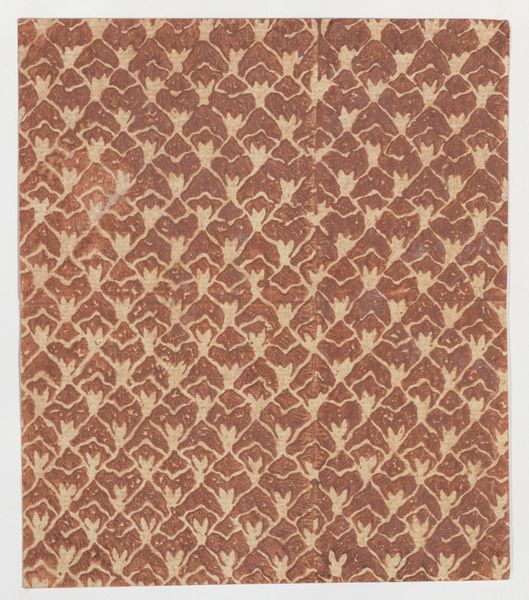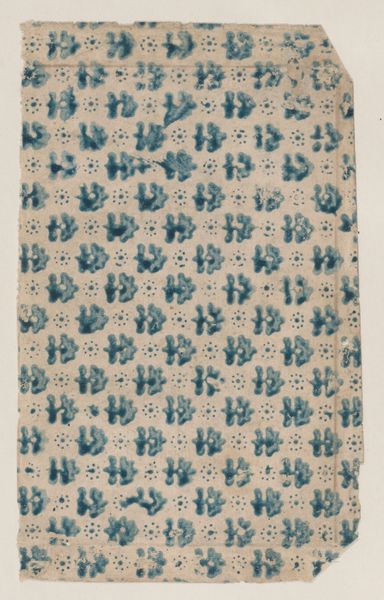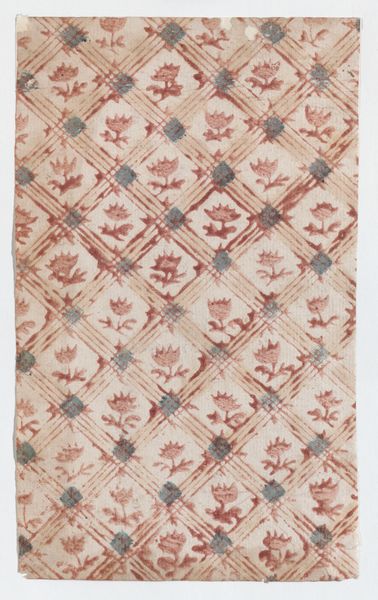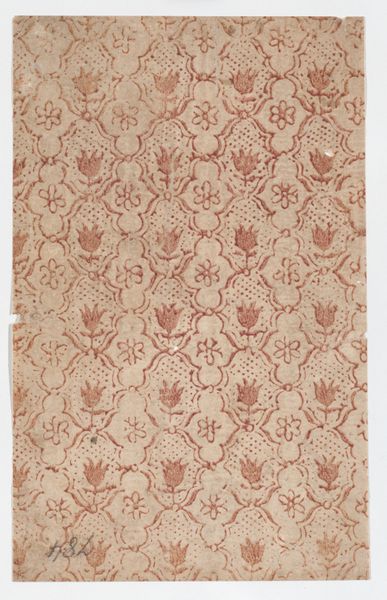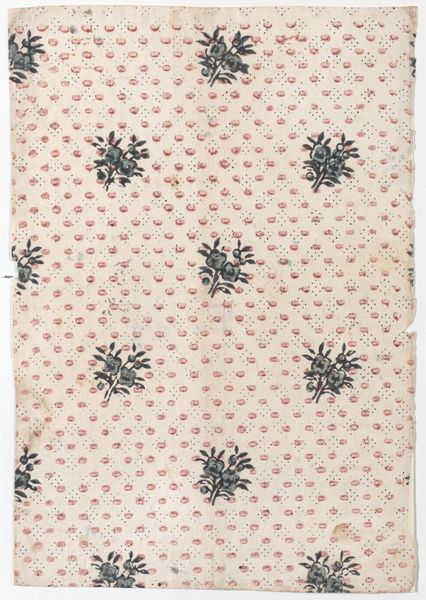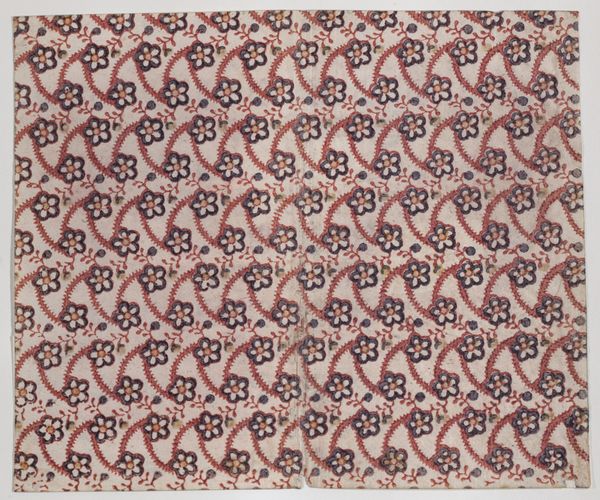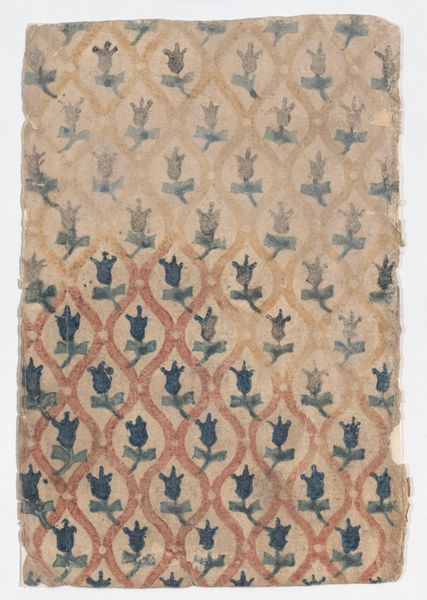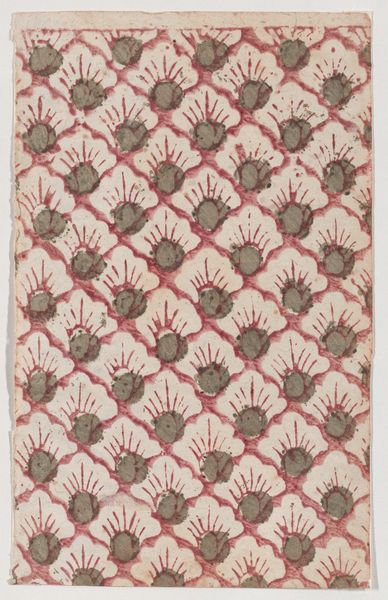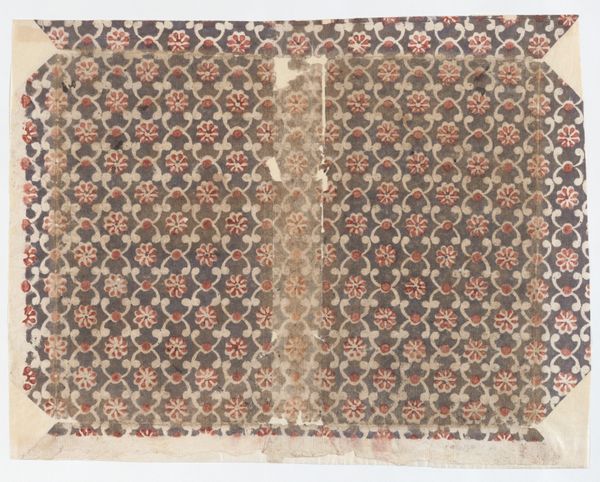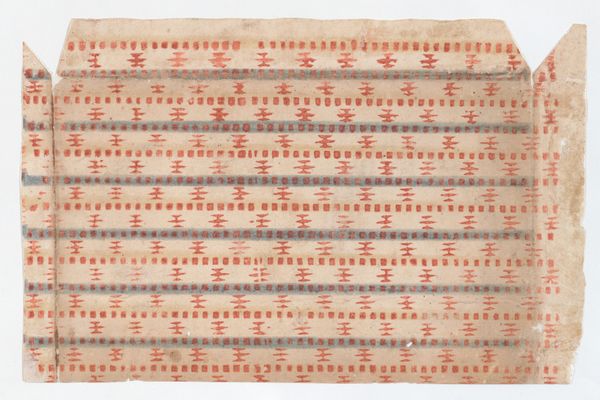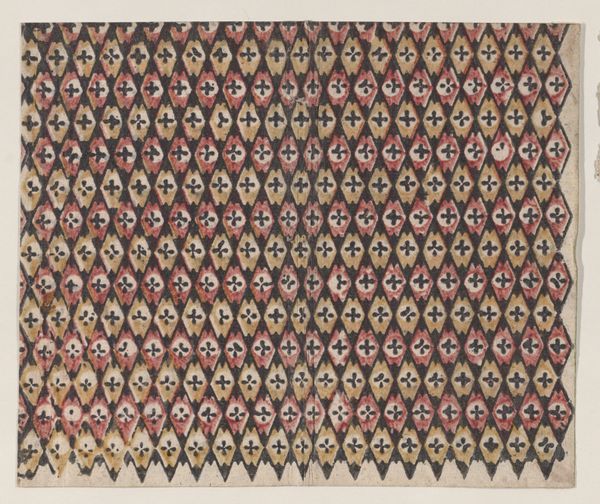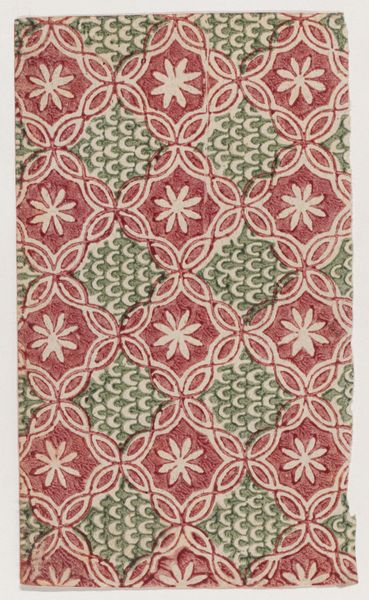
drawing, print, textile
#
drawing
#
natural stone pattern
# print
#
pattern
#
textile
#
geometric pattern
#
abstract pattern
#
organic pattern
#
geometric
#
repetition of pattern
#
vertical pattern
#
pattern repetition
#
decorative-art
#
imprinted textile
#
layered pattern
#
combined pattern
Dimensions: Sheet: 4 15/16 × 7 5/16 in. (12.6 × 18.5 cm)
Copyright: Public Domain
Editor: So, this is "Sheet with overall red star pattern," made sometime between 1700 and 1800 by an anonymous artist. It's a print, a drawing on textile, residing at the Metropolitan Museum of Art. I'm struck by the sheer repetition of the star motif; it feels almost hypnotic. What does this repetition signify within its historical context? Curator: Repetition, especially in textiles from this period, can point us to a few interesting areas. The repetitive star pattern signals something about production and consumption; it suggests accessibility, a design that could be reproduced relatively easily. Considering its potential use as a textile, think about the societal function of textiles during that time. What stories did they tell about their wearers, about class or cultural affiliation? Editor: So, it’s less about individual artistic expression and more about broader social communication? The regularity makes me think about standardization. Curator: Precisely! Standardization enabled wider distribution and affordability. And in the 18th century, textile production played an increasing role in shaping global economies. Think about trade routes and colonial influences – what colors and designs were becoming popular, and where? Does the red dye give you any clues about its origin, or who might have desired this textile? Editor: I see... the red dye could indicate specific regions where that dye was prevalent, maybe signifying trade or colonial exchange! The textile itself becomes a historical document. Curator: Exactly. The “anonymous” nature raises another set of questions. What does it mean when a creator’s individual identity is less important than the object's societal function and circulation? Editor: That is fascinating; I had focused so much on the visual that I missed that it may be communicating more than it aesthetically pleases. Curator: It's a valuable reminder that art exists within and reflects the world around it. Editor: Definitely! Thank you for that expanded perspective.
Comments
No comments
Be the first to comment and join the conversation on the ultimate creative platform.
